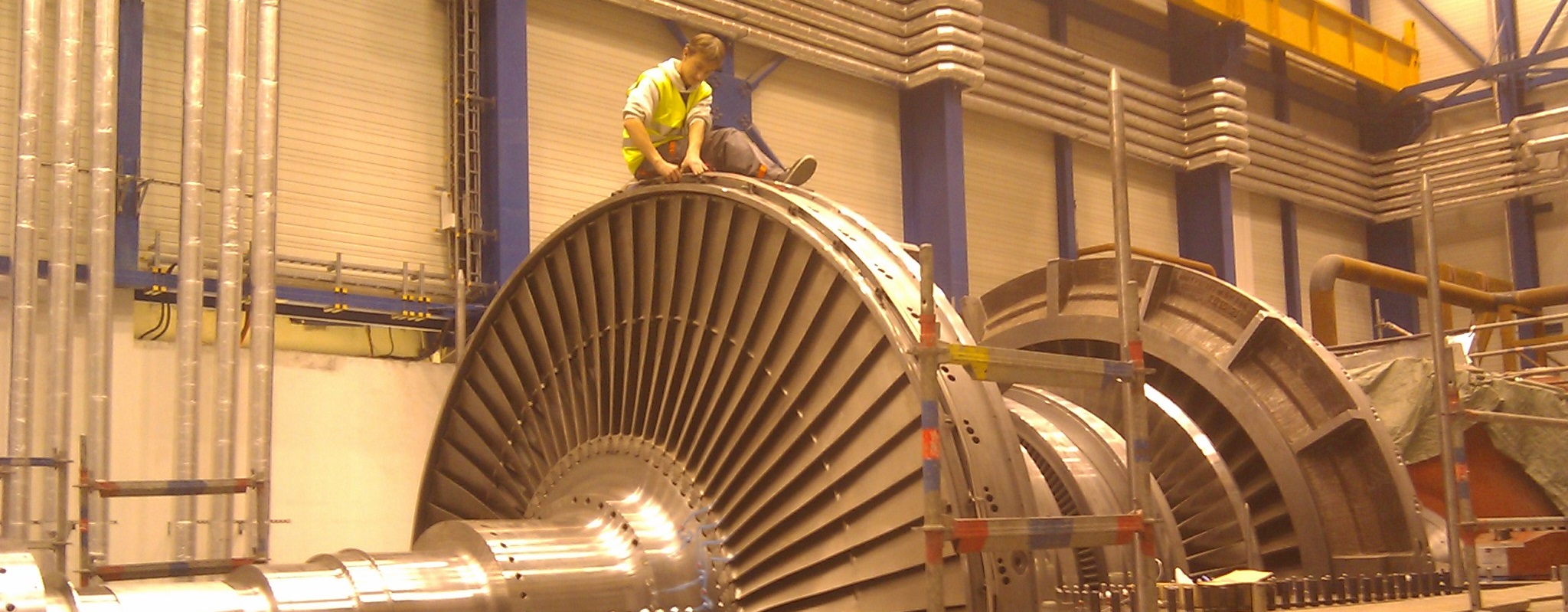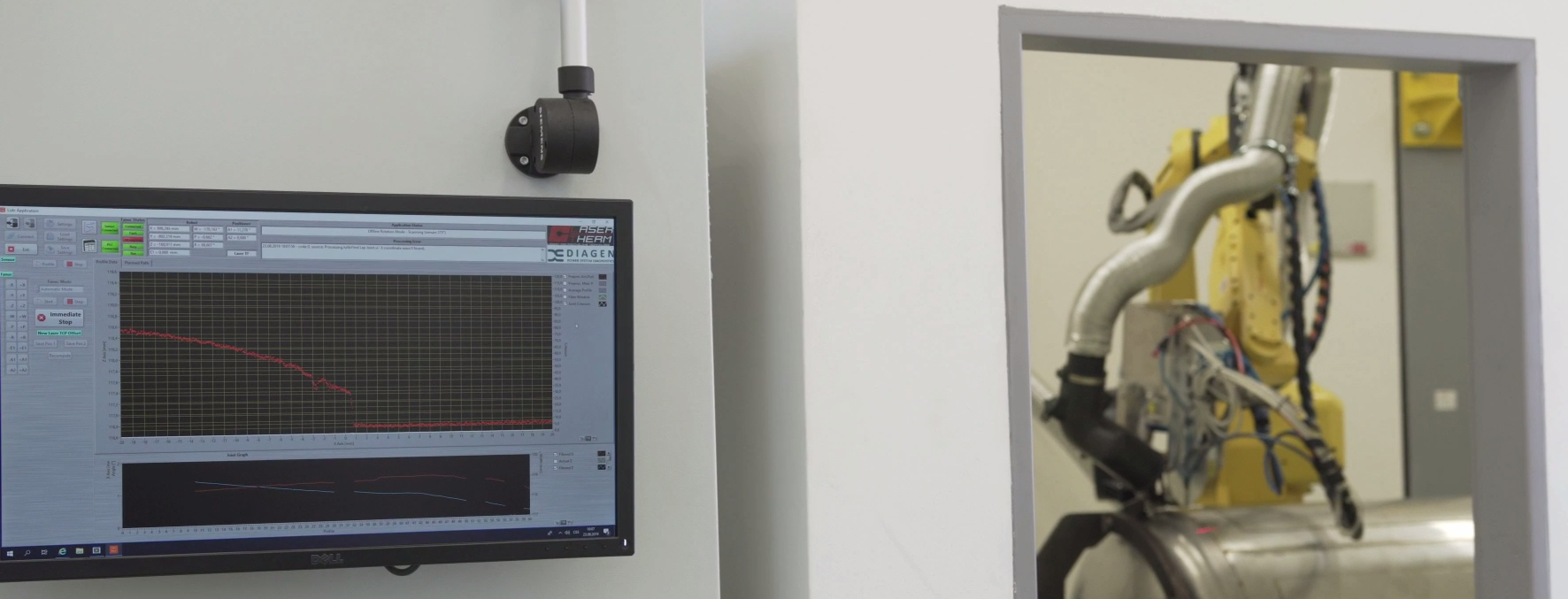Relative shaft vibrations are standardly used for monitoring of rotor vibration behaviour during all operational states. Relative shaft vibrations are normally used for determination of rotor response to several excitation forces but reversely can be used to determination of rotor excitation sources. It was observed on several machines of different output power and types of blades that also vibrating blades excite rotor to vibrate on frequencies related to natural frequencies of blades. With detailed time-frequency analysis of relative shaft vibration it was founded, that rotor vibrations do not contain exactly components with frequencies equal to natural frequencies of blades, but frequencies given by addition and substraction of blades natural frequencies and rotational frequency of shaft. This indicates, that blade vibrations are modulated by component with frequency given by shaft rotational speed. There should be noted that component with exact blade natural frequency is not contained in rotor vibration spectrum. Sometimes only component fn+frot is visible in signal spectrogram because of presence of low frequency noise masking the fn-frot component.
Presence of relative shaft vibration components with frequencies related to blade natural frequencies indicates rotor excitation by vibrating blades. These components can be used for monitoring of blades and changes in blade vibration due to changes of their properties (ie change of stiffness in case of crack) can be evaluated. Unlikely to BTT method, shaft vibration contain overall of all blades near to bearing pedestal, and that is why it is not possible to monitor amplitude and frequency of each blade separately, but information of blade vibration covers all blades behaviour. Usually, the vibration from last bladed disc of monitored turbine stage are most likely to be observed.
There are two main utilizations of blade monitoring from shaft vibrations. The first one is correction of Campbell diagram of given blade which was calculated by FEM in phase of blade design or evaluated on experimental stand. It is not possible to include all bonds between separate blades, bladed disc and shaft or influences of operational parameters (back-pressure or output power) to FEM model and therefore the modal characteristics of blades during machine operation can be different from calculated ones. Mainly higher and complicated modal shapes, given by superposition of axial, tangential and torsional vibrations, are difficult to model.
Relative rotor vibrations can be also used for monitoring of blade oscillation amplitudes. The transfer function of rotor-blade system can be determined from simultaneous measurements of relative rotor vibrations and BTT. Unfortunatelly this dependency is strongly tied with current type of machine. Transfer functions are different even between front and rear bearing pedestals of the same turbine stage. But there is possibility to calibrate this method only once and use relative rotor vibration signals for monitoring of blade vibrations.






